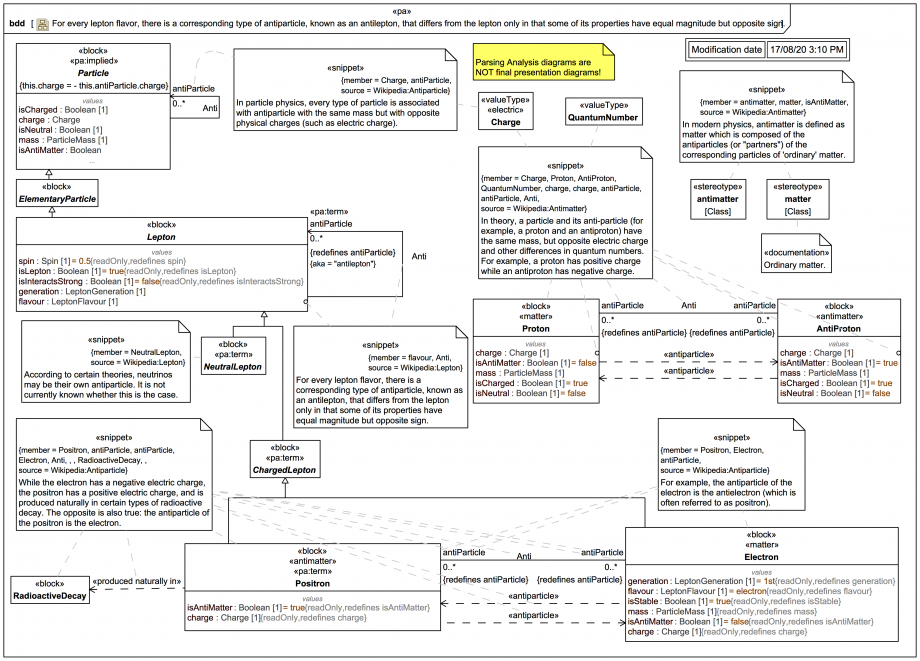Tags and keywords
Anti on block Particle. There is a similar redefining Association to self Anti on block Lepton, which uses a tagged value on «pa:term» to record {aka = "antilepton"}.
It seems also that the antiparticle concept is symmetric: 'The opposite is also true: the antiparticle of the positron is the electron'. So now the ends of the Association Anti between Electron and Positron are both named antiParticle (previously one was named particle), and they both redefine the Property of the same name from Lepton.
Apparently there are kinds of "charge" other than electric charge that get reversed between particles and antiparticles, but we have not been told yet what they are. We can at least have a corresponding constraint for «electric» Charge on Particle.
One of the snippets on antimatter leads to the stereotype keywords «matter» and «antimatter», which have been applied to Electron and Proton and to Positron and AntiProton respectively. (It is not clear yet how neutrinos should be handled, and there may be other particles that are their own anti-particles, and thus are not exclusively matter or antimatter.)
Only some of the attributes differ between Electron and Positron (and likewise between Proton and AntiProton):
Apparently the mass is shared, and perhaps some other attributes that are not "charge" related. Is there some kind of intermediate abstraction such a "AbstractElectron" that can be shared between them? That brave step is taken next when we also fill in some of the basic data on Electron and Positron.


